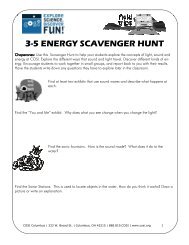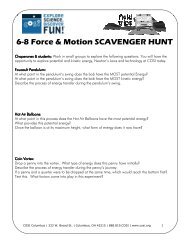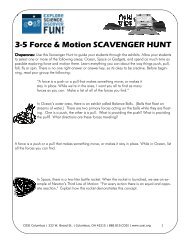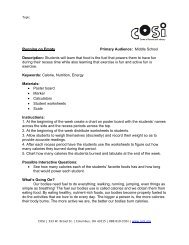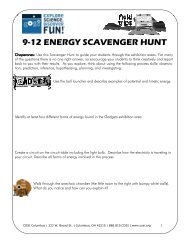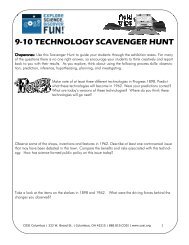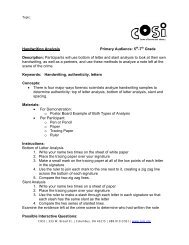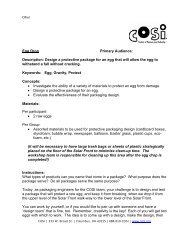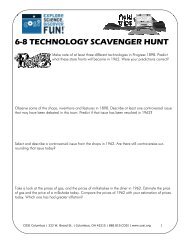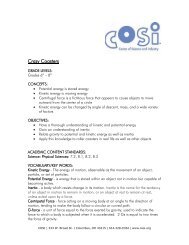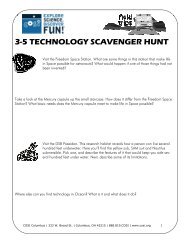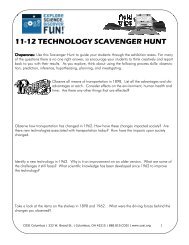3-5 Force & Motion TEACHER GUIDE - COSI
3-5 Force & Motion TEACHER GUIDE - COSI
3-5 Force & Motion TEACHER GUIDE - COSI
You also want an ePaper? Increase the reach of your titles
YUMPU automatically turns print PDFs into web optimized ePapers that Google loves.
3-5 <strong>Force</strong> & <strong>Motion</strong> <strong>TEACHER</strong> <strong>GUIDE</strong>Vocabulary WordsThese are some <strong>Force</strong> & <strong>Motion</strong> terms that you should be familiar with as you explore <strong>COSI</strong> withyour students:• <strong>Force</strong>: A push or pull on an object. You can observe a force when something flies, falls, spins,drops, rolls or stops.• Gravity: The earth’s pull on things.• Mass: A measure of quantity of matter in an object.• Newton’s First Law of <strong>Motion</strong>- An object in motion will stay in motion unless acted upon by anoutside force, or things will keep on doing what they are doing until something stops them.This is also known as inertia.• Newton’s Second Law of <strong>Motion</strong>: <strong>Force</strong> =Mass x acceleration, which translates to this: themore mass an object has, the more you have to push it. The harder you push an object, thefarther it will go.• Newton’s Third Law of <strong>Motion</strong>: When you push on an object, it pushes back, and is often referredto as action and reaction. This is not the same as cause & effect.• Speed: how far something goes in a certain amount of time.• Velocity: How fast and in what direction something is going.• Weight: The amount of gravitational pull on an object.Process Skills are the actions that it takes to “do science.” These are some of the scientific processskills that your students will be using as they explore the exhibits at <strong>COSI</strong>.• Observe - Use your senses to gather information.• Measure- Use tools and numbers to quantify objects or phenomena.• Categorize - Place objects into groups based on similarities or differences.• Communicate - Use words, pictures, graphs and diagrams to share your ideas.• Investigate - Follow a scientific method to formulate questions, conduct an experiment.• Apply - Put the information you’ve gathered to use.• Infer – Make an assumption based on your observations.• Question – Wonder and ask about things and find ways to discover answers.• Predict - Decide what will happen in the future based on your observations.<strong>COSI</strong> Columbus | 333 W. Broad St. | Columbus, OH 43215 | 888.819.<strong>COSI</strong> | www.cosi.org 6



